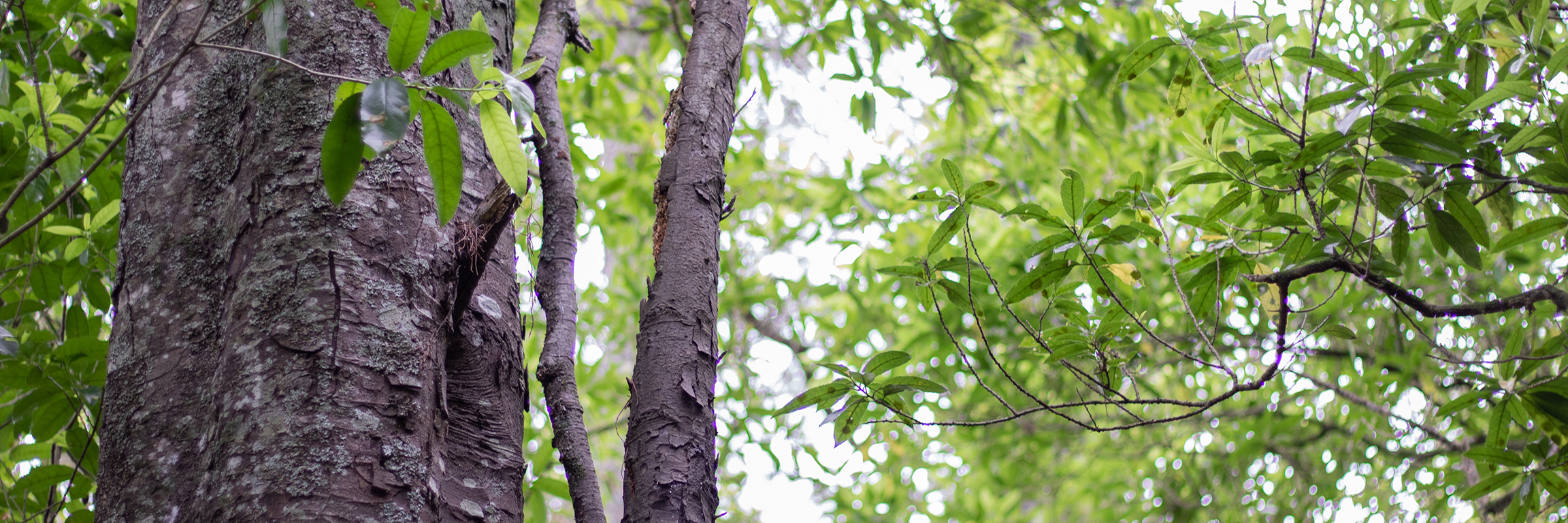Why we monitor forest fragmentation
This indicator measures indigenous forest fragmentation in the Waikato region and how this has changed over time (from 1840 to 2018). It reports on the change in the number, size, edge to interior ratio, and isolation of indigenous forest fragments in the Waikato region.
Indigenous forest is defined as being:
- tall - with a canopy generally taller than three metres
- closed - with greater than 80 per cent cover
- dominated by indigenous tree species.
Interior forest is defined as being areas of a forest patch that are more than 60 m from the indigenous forest edge, irrespective of whether that forest patch is in pasture, plantation forest, or a type of non-forest indigenous vegetation such as scrub or sedgeland.
Our indigenous forests are important reservoirs of indigenous biodiversity. Fragmentation of indigenous forest threatens indigenous biodiversity at the genetic, species, community and ecosystem levels. However, in some parts of the Waikato region, small forest fragments are the only areas of indigenous forest left.
Small forest fragments often have a high proportion of vegetation exposed to edge effects. Conditions in the forest 'edge' are quite different to those in the forest interior, and often favour introduced weeds. It's important we manage small forest fragments to reduce edge effects and increase the amount of 'interior' forest.
Small forest fragments rely on interaction with neighbouring fragments of sufficient size to maintain their biodiversity. As more forests are cleared, they are split into smaller, more isolated 'habitat islands' separated by pasture, plantations, orchards, roads or urban settlements. The cleared land between forest fragments can be a barrier to the movement of indigenous animals and plants, making it difficult for them to find enough food, a mate or to disperse their seeds to suitable sites.
It's important that we monitor changes in forest fragmentation to provide information about:
- pressures on forest fragments, for example, from land use and development
- the areas where forest patches are being lost
- where we may need to consider planting to restore or reconnect fragments.
This information helps us identify policy responses to avoid or reverse negative effects on our forest communities (part of the region’s indigenous biodiversity).
What's happening?
In 1840 (around the time of European settlement) about half of the Waikato region was covered in indigenous (native) forest. The forest was in about 100 huge areas, 13,200 hectares each on average, separated by scrub, tussock grasslands, wetlands, lakes, or rivers.
Over time, large areas of forest were cleared, leaving behind smaller patches, or 'forest fragments'. This process, called forest fragmentation, has resulted in a highly fragmented landscape in most lowland areas of the Waikato region.
Forest fragments can be:
- the patchy remains of larger indigenous forests, left over when the land around them has been cleared, or
- new areas of forest which have grown back on cleared land.
In 2018 we had 8359 indigenous forest areas larger than 0.4 hectares (two fewer than in 2012), totalling 455,170 hectares (18.5 per cent of our region).
Most of our region's indigenous forest is found in a few large fragments. The nine largest fragments are each bigger than 10,000 hectares and contain over 57 per cent of the indigenous forest in the region. However, 93 per cent of the individual forest patches remaining in the Waikato region are small fragments (less than 25 hectares).
Although their combined area makes up just 7 percent of our region's total indigenous forest, small fragments are important because in some parts of our region they are all that remain. This is particularly so in Hamilton city where 78 per cent and Waipa District where 30 per cent of all remaining indigenous forest is found in small fragments.
On average small fragments (< 25 hectares) are just under 2 kilometres away from a larger patch of native forest. Most small fragments have very little native forest in their immediate landscape – for 92 per cent of them less than a quarter of the land in 1-kilometre radius around them is in native forest.
Since 1996, the Land Cover Database records a loss of 22 indigenous forest fragments in the Waikato Region. The majority (18) were less than five hectares, and two were under 25 hectares. In more recent times the number of forest fragments has changed very little. Since 2012, there was no change in the number of fragments greater than 25 hectares, and a net loss of two fragments under 25 hectares. One recent example of forest fragmentation was the division of the 544 hectare Taupiri Range forest into three fragments of 514 hectares, 13 hectares and 6 hectares as a result of construction of the Waikato Expressway.
Methods - how we monitor
Results - data and trends
Download the data file
- View this graph's data and check out our more detailed information about forest fragments in the Waikato region, including information for each district council area in the region.
- The data were collected between 1996 and 2018 from the Landcover Database, and an estimation of the 1840 land cover from Leathwick et al. 19941.




To ask for help or report a problem, contact us
Tell us how we can improve the information on this page. (optional)